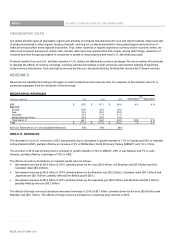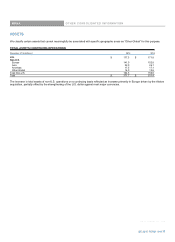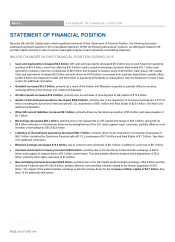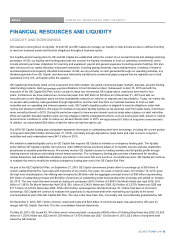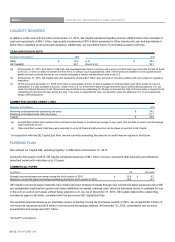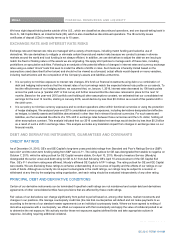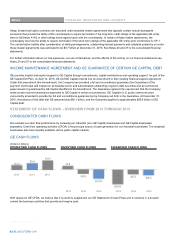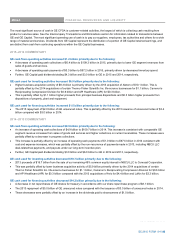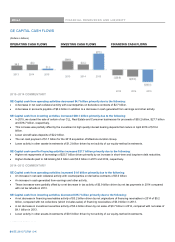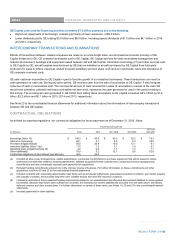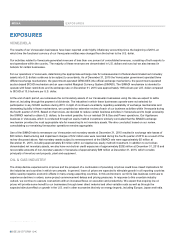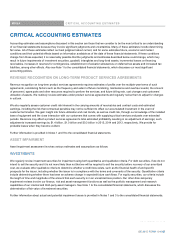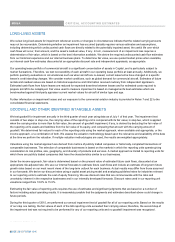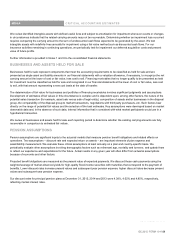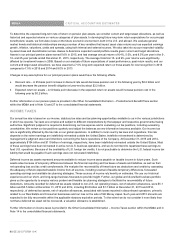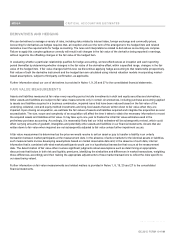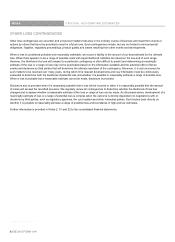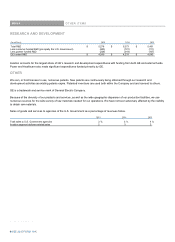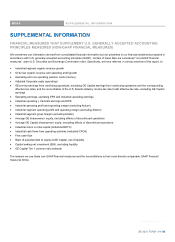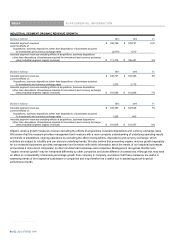GE 2015 Annual Report Download - page 114
Download and view the complete annual report
Please find page 114 of the 2015 GE annual report below. You can navigate through the pages in the report by either clicking on the pages listed below, or by using the keyword search tool below to find specific information within the annual report.
MD&A EXPOSURES
86 GE 2015 FORM 10-K
EXPOSURES
VENEZUELA
The results of our Venezuelan businesses have been reported under highly inflationary accounting since the beginning of 2010, at
which time the functional currency of our Venezuelan entities was changed from the bolivar to the U.S. dollar.
Our activities related to Venezuela generated revenues of less than one percent of consolidated revenues, consisting of both exports to
and operations within the country. The majority of these revenues are denominated in U.S. dollars and euro but we also transact in
bolivars for certain businesses.
For our operations in Venezuela, determining the appropriate exchange rate for remeasurement of bolivar-denominated net monetary
assets into U.S. dollars continues to be subject to uncertainty. As of December 31, 2015 the Venezuelan government operated three
different exchange mechanisms: the government-operated CENCOEX (the official exchange mechanism), the government-operated
auction based SICAD mechanism and an open market Marginal Currency System (SIMADI). The SIMADI mechanism is intended to
operate with fewer restrictions and its exchange rate on December 31, 2015 was approximately 198 bolivars per U.S. dollar compared
to SICAD at 13.5 bolivars per U.S. dollar.
At the end of each period, we remeasure the net monetary assets of our Venezuelan businesses using the rate we expect to settle
them at, including through the payment of dividends. The industries in which these businesses operate were not selected for
participation in any SICAD auctions during 2015. In light of continued uncertainty regarding availability of exchange mechanisms and
decreasing liquidity in those mechanisms, we completed an extensive review of each of our business activities within Venezuela during
the fourth quarter of 2015. Based on that review, we decided to reduce certain business activities in Venezuela and to begin accessing
the SIMADI market to obtain U.S. dollars, to the extent possible, for our residual Oil & Gas and Power operations. Our Appliances
business in Venezuela, which is conducted through an equity method investment, similarly concluded that the SIMADI exchange
mechanism provides the most appropriate rate for measuring its net monetary assets. We also concluded, based on our review,
consolidating our remaining Venezuelan operations remains appropriate.
Use of the SIMADI rate to remeasure our Venezuelan net monetary assets at December 31, 2015 resulted in exchange rate losses of
$83 million. Restructuring and impairment charges of $12 million also were recorded during the fourth quarter of 2015 as a result of the
review discussed above. Net monetary assets subject to remeasurement at the SIMADI rate were approximately $5 million at
December 31, 2015, including approximately $3 million within our Appliances equity method investment. In addition to our bolivar-
denominated net monetary assets, we also have non-bolivar credit exposures of approximately $292 million at December 31, 2015 and
recoverable amounts of non-monetary assets in Venezuela of approximately $89 million at December 31, 2015, which consists
principally of inventory and property, plant and equipment.
OIL & GAS INDUSTRY
The sharp decline experienced in oil prices and the prospect of a continuation of prevailing oil prices could have mixed implications for
the industries and countries in which we compete. In general, lower oil prices are expected to stimulate growth in oil importing countries
while causing negative economic effects in many energy-exporting countries. In this environment, our Oil & Gas business continues to
experience declines in orders, some project commencement delays and pricing pressures. In response to this uncertain industry
outlook, we continue to execute cost actions with an increased focus on execution and productivity. We expect that ongoing low oil
prices will provide some benefit to our businesses through lower direct material and other variable costs as well as through the
expected stimulus-effect on growth in the U.S. and in other economies that rely on energy imports, including Europe, Japan and India.
86 GE 2015 FORM 10-K


